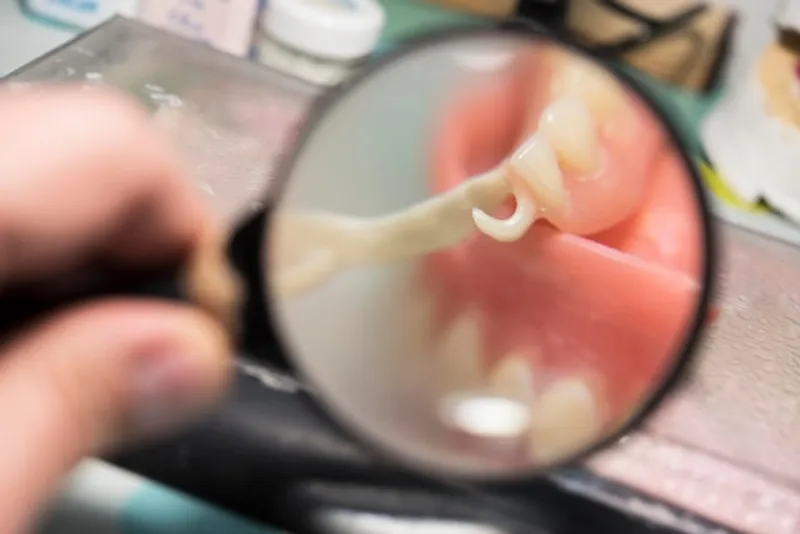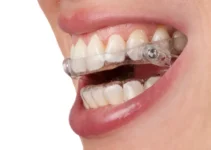Identifying the symptoms of a dental implant infection is crucial for timely treatment and to prevent further complications. These infections can manifest as redness, swelling, pain at the implant site, or even a bad taste in the mouth. It’s important for patients to monitor these signs closely and seek immediate dental advice if they suspect an infection. This article will explore the common symptoms, potential causes, and effective management strategies for dental implant infections, providing essential information to maintain oral health.
Common Symptoms of Dental Implant Infection
Dental implants have revolutionized the field of dentistry, offering a reliable solution for missing teeth. However, like any surgical procedure, they come with potential risks, including infections. Recognizing the common symptoms of dental implant infection can lead to prompt treatment and better outcomes. Infections can develop soon after the procedure or even years later, making it crucial to be vigilant.
Understanding the symptoms helps in distinguishing between normal post-operative healing and potential complications. While minor discomfort is expected after the procedure, persistent or severe symptoms should be evaluated by a dental professional. Early detection and intervention can prevent more serious issues such as implant failure or systemic infections.
The following sections will delve into some of the most common symptoms, including redness and swelling as well as pain and discomfort. Awareness of these symptoms can aid in timely medical consultations, ensuring the long-term success of dental implants.
Redness and Swelling
Redness and swelling around the implant site are typical in the initial days following the surgery. However, if these symptoms persist or worsen over time, it may indicate an infection. The inflammation is the body’s natural response to injury, but excessive redness and swelling can signal that bacteria have invaded the surgical site.
Studies have shown that prolonged swelling and redness, lasting beyond a week, may require medical attention. Such symptoms can be accompanied by other signs of infection, such as pus discharge or a foul odor emanating from the implant area. In severe cases, the swelling might extend to nearby facial areas, causing significant discomfort.

To minimize the risk of infection, adhere to post-operative care instructions such as maintaining proper oral hygiene and avoiding strenuous activities. Regular follow-ups with your dentist are crucial to monitor the healing process and catch any early signs of complications.
Pain and Discomfort
It is normal to experience some level of pain and discomfort after a dental implant procedure. However, persistent or intense pain can be a red flag for infection. Pain that doesn’t subside with over-the-counter pain medications or seems to get worse with time should be evaluated by a dental professional.
Sometimes, the pain might radiate to adjacent areas, affecting your daily activities such as eating and speaking. Chronic discomfort often indicates that the implant site is not healing properly, potentially due to an infection that is causing the surrounding tissues to remain inflamed.
Addressing pain promptly is essential to prevent further complications. If an infection is confirmed, treatments may include antibiotics, deep cleaning, or in severe cases, removal of the implant. Early intervention can save the implant and preserve overall oral health.
By staying informed about common symptoms of dental implant infection, you can seek timely medical advice and ensure the success of your dental implants. Make sure to read other articles on our site for more insights into dental health and advanced treatments.
Diagnosing a Dental Implant Infection
Diagnosing a dental implant infection is a critical step in ensuring the long-term success of the implant and the overall oral health of the patient. Timely diagnosis can prevent more serious complications, such as bone loss or implant failure. In this article, we will explore the steps involved in diagnosing an infection, including clinical examination, radiographic imaging, and laboratory tests.
Dental implant infections can manifest in various ways, often making diagnosis challenging. Symptoms can range from mild discomfort to severe pain and mobility of the implant. The importance of early diagnosis cannot be overstated, as it allows for appropriate and timely intervention. There are several diagnostic tools and methods that dentists can employ to identify an infection accurately.
Accurate diagnosis requires a combination of methods. This multi-faceted approach ensures that no aspect of the infection is overlooked, whether it is a clinical sign or a less obvious indicator seen in imaging or lab results. Understanding these methods can help both clinicians and patients recognize the signs of trouble early and take action accordingly.
Clinical Examination
The first step in diagnosing a dental implant infection is a thorough clinical examination. This includes assessing the implant site for signs of infection, such as redness, swelling, and pus. During the examination, the dentist will also check for any signs of peri-implantitis, which is an inflammatory condition affecting the soft and hard tissues around the dental implant.
Patients may report pain or discomfort around the implant area, which can be a significant indicator of infection. Sometimes, the implant may appear loose, indicating that the underlying bone has been affected. Gum recession around the implant could also be a sign of an ongoing infection. These clinical signs are critical for an initial assessment and help guide further diagnostic steps.
A holistic clinical examination will also involve a patient’s medical and dental history. Asking about any recent illnesses, medications, or changes in health can provide valuable context and clues that might explain the presence of an infection. Such comprehensive evaluation helps in formulating a more accurate diagnosis.
X-rays and Imaging
X-rays and other imaging techniques are invaluable tools in diagnosing dental implant infections. Radiographs can reveal changes in the bone structure around the implant, which might not be visible during a clinical examination. Bone loss is a significant indicator of infection and can often be seen clearly in an X-ray.
Advanced imaging techniques like Cone Beam Computed Tomography (CBCT) provide a more detailed view of the bone and surrounding tissues. CBCT scans offer a three-dimensional perspective, allowing for more precise identification of problem areas. These scans are particularly useful in detecting early signs of infection and assessing the extent of bone loss.
In addition to X-rays, intraoral cameras can assist in visually diagnosing issues that might not be apparent to the naked eye. These tools can capture high-resolution images of the implant site, providing a clear view of the surrounding gums and teeth. This visual data complements the information gathered from radiographs.
Laboratory Tests
Laboratory tests serve as an essential component in diagnosing dental implant infections. These tests can include microbiological cultures to identify the specific bacteria causing the infection. Knowing the exact pathogen can help in selecting the most effective antibiotic treatment, ensuring a more targeted and successful intervention.
Additionally, blood tests might be conducted to look for markers of infection, such as increased white blood cell count or elevated levels of C-reactive protein (CRP). These markers can confirm the presence of an infection and its severity, guiding further treatment strategies.
Another useful laboratory test is the polymerase chain reaction (PCR), which can detect bacterial DNA and provide a faster diagnosis compared to traditional cultures. PCR is especially beneficial in identifying bacteria that are difficult to culture, ensuring no pathogen is missed during the diagnostic process.
Using a combination of these laboratory tests provides a comprehensive understanding of the infection, allowing for a more effective treatment plan. Laboratory results can validate the findings from clinical examinations and imaging, offering a well-rounded diagnostic approach.
By effectively combining clinical examination, imaging techniques, and laboratory tests, dentists can accurately diagnose dental implant infections and take the necessary steps to treat them. For further insights into dental health and advanced treatment options, explore our other informative articles.
Effective Treatments for Dental Implant Infection
Dental implants have revolutionized modern dentistry, offering a reliable solution for missing teeth. However, like any medical procedure, they are not without risks. One of the most significant complications that can arise is a dental implant infection. Although relatively rare, infections can severely impact the success of the implant and overall oral health. Identifying and initiating effective treatments is crucial to avoiding long-term complications.
When an infection does occur, prompt and appropriate treatment is essential to mitigate any damage to the surrounding bone and tissue. The treatment plan usually involves a combination of strategies tailored to the specific needs of the patient. These methods include antibiotic therapy, mechanical cleaning, and in more severe cases, surgical intervention.
Each of these treatments targets different aspects of the infection, and their effectiveness can depend on the stage and severity of the infection. Below, we delve into each of these approaches and explore how they contribute to treating dental implant infections.
Antibiotic Therapy
Antibiotics are often the first line of defense against dental implant infections. These medications are effective in killing or inhibiting the growth of bacteria that cause infections. Various studies have shown that a well-chosen antibiotic regimen can significantly improve the prognosis of an infected dental implant.
Choosing the right antibiotic is crucial. Broad-spectrum antibiotics are typically prescribed initially, given their effectiveness against a wide range of bacteria. These may include amoxicillin, metronidazole, or clindamycin. Once a specific bacterial strain is identified through culture tests, more targeted antibiotics may be used for better results. However, it’s important to note that antibiotic therapy alone might not be sufficient in severe cases of infection. While it can reduce bacterial load and manage symptoms, antibiotics must often be coupled with other treatments to address the underlying issues.
Mechanical Cleaning
Mechanical cleaning involves the physical removal of bacterial plaque and biofilm from the implant surface and surrounding tissues. This is a critical step as biofilm can protect bacteria from antibiotics, making the infection more challenging to treat. Various techniques can be employed, including:
- Scaling and root planing: This involves using special instruments to clean the surfaces of the implant and the surrounding bone.
- Air-abrasive devices: These use a stream of air mixed with abrasive particles to remove plaque and biofilm.
- Laser therapy: Lasers can effectively disinfect the area and promote tissue healing.
Studies indicate that mechanical cleaning, when combined with antibiotic therapy, can be highly effective in managing dental implant infections. This dual approach helps in ensuring that the implant area is free from infectious agents and biofilm that can shield bacteria from antibiotics.
Surgical Intervention
In cases where antibiotic therapy and mechanical cleaning are insufficient, surgical intervention may be necessary. This approach is particularly important for extensive infections that have spread to the bone or have caused significant tissue damage. Surgical intervention can involve several procedures, including:
- Debridement: The surgical removal of infected tissue and cleaning of the implant area.
- Flap surgery: This involves lifting a section of the gum to better access and clean the infected area.
- Bone grafting: In cases where bone loss is significant, grafting can help in regenerating bone lost due to the infection.
While surgical intervention is more invasive, it can be highly effective in treating severe infections. Studies have shown that timely surgical management can greatly improve the prognosis of dental implants affected by severe infection.
In summary, treating dental implant infections effectively often requires a multifaceted approach. Whether it’s antibiotic therapy, mechanical cleaning, or surgical intervention, each method plays a crucial role in combating infection and ensuring the longevity of the dental implant. Be sure to read other articles for more in-depth information on related topics and advancements in dental health.
Preventing Future Infections
One of the fundamental aspects of ensuring the longevity and success of dental implants is preventing future infections. Infections can compromise the stability of the implant and lead to severe complications. Thus, a combination of maintaining oral hygiene, regular dental check-ups, and making essential lifestyle and dietary changes is imperative.
Research has shown that patients who follow a stringent oral hygiene regimen have a significantly lower risk of peri-implantitis and other implant-related infections. Implementing these measures can lead to a better prognosis and more enduring results.
Maintaining Oral Hygiene
Proper oral hygiene is the cornerstone of preventing future infections in dental implants. It is crucial to brush your teeth at least twice a day using a soft-bristle toothbrush and fluoride toothpaste. Additionally, interdental brushes and water flossers can help clean areas that are hard to reach with a standard toothbrush, ensuring that no food particles or plaque remain.
Antimicrobial mouthwashes can also be beneficial. They help in reducing the number of bacteria in the mouth, thereby decreasing the risk of infection. Patients are often advised to use a chlorhexidine mouthwash for its powerful antibacterial properties.
Adopting these practices within your daily routine is a simple yet effective way to maintain the health of your dental implants and prevent infections. Consistency and thoroughness are key.
Regular Dental Check-ups
Regular dental check-ups play a vital role in preventing infections. By visiting your dentist every six months or as recommended, any potential issues can be detected early, and necessary interventions can be made promptly.
During these visits, the dentist can perform professional cleanings, which are more comprehensive than routine home care. They can remove tartar and plaque buildup that you may have missed, reducing the risk of peri-implant diseases. Dentists can also assess the overall health of your gums and bones, ensuring that they are sufficiently supportive of the implant. Early detection and treatment of any adverse changes can prevent minor problems from escalating into more severe infections.
Lifestyle and Dietary Changes
Adopting a healthy lifestyle and making dietary changes can greatly reduce the risk of infections. Smoking, for instance, is a significant risk factor that impedes healing and increases the likelihood of implant failure. Quitting smoking can lead to improved oral health and a higher success rate for implants.
A balanced diet rich in vitamins and minerals supports the body’s natural healing processes. Foods high in calcium and vitamin D are particularly beneficial for maintaining bone health, which is crucial for the stability of dental implants.
Additionally, avoiding excessive consumption of sugary foods and beverages can reduce the risk of cavities and gum disease, further protecting your implants. Staying hydrated is also essential, as it helps maintain the natural cleansing mechanisms of the oral cavity.
Incorporating these lifestyle and dietary changes can create a healthier environment for your dental implants, thereby reducing the risk of infections.
In conclusion, preventing future infections requires a multifaceted approach encompassing stringent oral hygiene, regular dental check-ups, and significant lifestyle and dietary changes. For more detailed insights and expert advice, be sure to explore our other articles.
Detecting Symptoms of Dental Implant Infections
Identifying symptoms of dental implant infections is crucial for timely intervention and treatment to prevent further complications. Here’s a detailed look at the key symptoms to be aware of.
What are common symptoms of a dental implant infection?
Common symptoms of an infection around a dental implant include pain or discomfort around the implant site, redness and swelling of the gums, bad taste or odor coming from the implant area, and puss or bleeding when touching or probing the area. Additionally, if the implant starts to feel loose, it might also indicate an underlying infection. Early detection and timely treatment are essential.

My name is Salman Kapa, a 73-year-old expert in bone regeneration and dental implantology. With decades of experience in the field, I am dedicated to advancing our understanding of oral health and hygiene. Through my research and writing, I aim to contribute to the development of innovative solutions in dental care.




